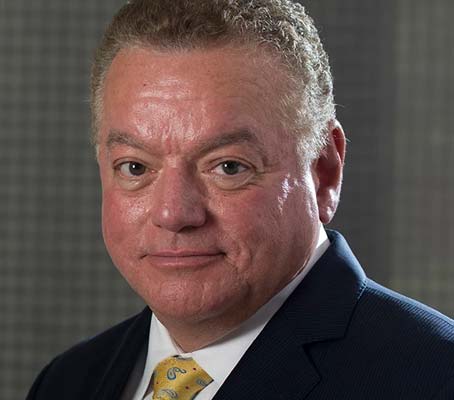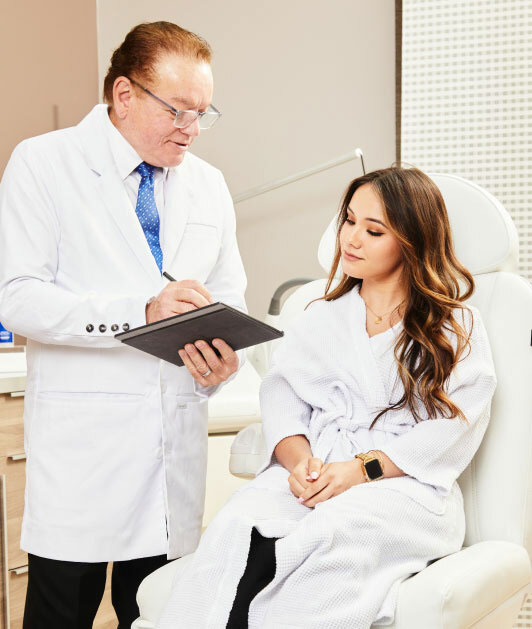- Select Language ▼
The official term for excess breast tissue in men is gynecomastia. The medical term comes from the Greek language, and it literally means “female-like breasts.” Most boys and men don’t talk about it and are often unaware there are straightforward corrections.
Gynecomastia is a lot more common than you think. About 40%-60% of all men have some amount of gynecomastia. That’s right, just about half of all men and boys have some degree of female-appearing breasts. All males can develop extra breast tissue in response to certain medications, hormones, performance-enhancing drugs, or simple genetics. Spend any time on a beach, and you’ll see how many young men already have a bit too much breast tissue, which shows up right after puberty knocks on their door.
The condition is pretty common in adolescent boys, and 90% of the time, symptoms disappear in months or at least a few years. The remaining 10% are burdened with a social handicap that causes a deep and complex shame, putting your relationship with your body at risk.
Because puberty involves significant production of sex hormones, this is when gynecomastia often appears. Puberty is an especially vulnerable time for most boys who want to fit in with their peers, are active in sports, and are more conscious of their appearance and sexual attractiveness. There is a genuine emotional component for boys and men with extra breast tissue. Dr. Fred Coville has been treating men and boys with this problem for over 25 years. He is keenly aware and very sensitive to the emotional impact and shame that often accompanies gynecomastia.
Why some of us develop female appearing breasts and others don’t is a tricky question. The causes are never the same for everyone. Most often, gynecomastia is caused by an imbalance of hormones. Here’s the deal: an imbalance between testosterone and estrogen usually triggers gynecomastia. It doesn’t mean you have low testosterone; it means there is a little too much estrogen mixed in with all the other hormones your body makes.
Testosterone controls the male traits, such as big muscles and body hair, while estrogen controls the female traits, including the growth of breasts. Most people think of estrogen as a hormone just for women, but men also produce it in relatively small amounts. However, male estrogen levels that are too high or are out of balance with testosterone levels can cause gynecomastia.
There are other ways you can develop gynecomastia. Though excess breast tissue often begins during puberty, many men who suffer from gynecomastia develop it at an older age. The causes in men are still related to excess estrogen but are influenced by other factors:
Many men go crazy working out with the hope that more exercise and “getting pumped” or “getting more cut” will make it look better. In fact, it can make it look worse.
Breasts are made up of two types of tissue in both men and women: fat and breast tissue. The more fat in your breasts, the more breast size fluctuates when you gain or lose a few pounds. Women whose breasts mainly consist of breast tissue will see more minor swings in breast size, which stays fairly consistent throughout their lives. If you have more than your fair share of breast tissue, it will remain there no matter how much weight you lose. Becoming very lean and losing a lot of body fat makes the excess breast tissue more noticeable, not less! That tissue now sits on lean chest muscle and will appear like a small breast mound under the nipple. That is why, here at Cornerstone Plastic Surgery & Aesthetic Medicine in Atlantic County, Dr. Coville always takes the extra breast tissue during a male breast reduction.

Liposuction in all its forms—laser liposuction, ultrasound, fat freezing, or melting — will only remove the excess fatty tissue. The extra breast tissue will still be there. You may see a nice improvement with liposuction alone, but usually, it is not enough for a complete and permanent result.
New technologies claim to remove excess breast tissue or correct gynecomastia. However, there is no scientific evidence that these non-invasive techniques that destroy fat from the outside work well enough to remove male breast tissue. Dr. Coville sees many men who have been dissatisfied by those machine treatments or even liposuction performed by doctors who don’t understand the full extent of gynecomastia and leave it mostly untreated.
Gynecomastia is best treated by undergoing a male breast reduction, where Dr. Coville removes extra breast tissue and sculpts a more masculine chest shape.
Men who suffer distress over excess breast tissue that feminizes the shape of their chest, or those with tenderness, discomfort, or even pain from breast tissue, make the best candidates for a male breast reduction. If you’d like to relieve the anxiety your chest causes you, start with a consultation with Dr. Coville in Linwood and Toms River, NJ. He’ll provide a thorough evaluation and set up a treatment plan to resolve your gynecomastia. In some cases, insurance may even cover the procedure if done for medical relief.
A male breast reduction uses an array of techniques, with which Dr. Coville is well-practiced. The outpatient procedure can be performed with IV sedation and local anesthesia, but general anesthesia is more suitable in more severe cases. Most often, men having a breast reduction to correct gynecomastia only require an incision around the areola, through which Dr. Coville extracts the extra breast tissue and fat that unnecessarily enlarges your chest. The techniques that best work for your goals will be decided on by you and Dr. Coville during your consultation in New Jersey. In instances of significant excess skin, additional incisions will be made to remove this overabundance and properly shape your chest to a pleasingly masculine form.
Upon waking from your procedure, you’ll be wrapped in a compression bandage to provide support and hold the shape Dr. Coville has sculpted. You may also have drains in place to relieve any excess fluid. It’s best to rest with your head elevated for 24-48 hours, though some mobility is encouraged to prevent blood clotting concerns.
Initial recovery takes about 1-2 weeks, after which time patients with less strenuous jobs may return to work. Avoid raising your arms above shoulder height or lifting anything above 20 pounds for about 3 to 4 weeks, particularly if you’ve required skin excision. This keeps the scars from stretching as they heal.
You’ll notice an immediate reduction in the forward protrusion of your chest despite the swelling and bandages. As you heal and the bandages are removed, the swelling will subside, and your masculine contour will become more apparent.
Shirts fit better, your posture improves as you stand taller, and you will feel less anxiety with removing your shirt in front of others. Most of all, your self-confidence will become what it should have been all along.
Written By: Dr. Frederick Coville
Frederick A. Coville, M.D., Cornerstone Plastic Surgery’s Owner and Medical Director
Frederick A. Coville, M.D., Cornerstone Plastic Surgery’s Owner and Medical Director, has been an Aesthetic and Reconstructive Plastic Surgeon for over 25 years. He firmly believes each of us possesses an inner “Foundational Beauty.”
As a student of beauty all his life, he calls upon his naturally artistic eye and God-given talents as a surgeon to deliver the results you demand. Dr. Fred likes to say, “It’s my job to help you find Your Beautiful!”
Request your consultation and let
us create a custom experience for you
